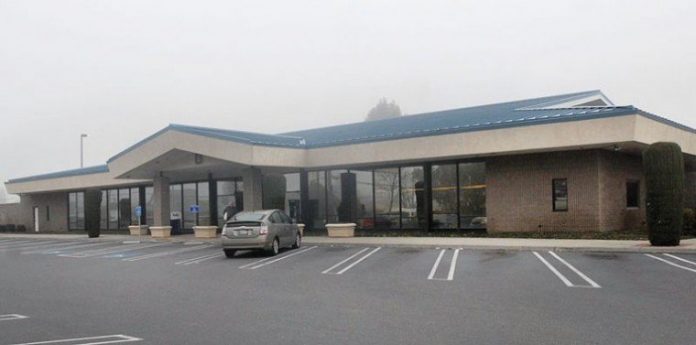Some residents in this growing city find the post office crowded
and aesthetically pitiful while others say it suffices. Council
members agree they have bigger fish to fry and little federal
influence anyway, and the postmaster claims everything’s fine, at
least for the next five years or so.
GILROY
Some residents in this growing city find the post office crowded and aesthetically pitiful while others say it suffices. Council members agree they have bigger fish to fry and little federal influence anyway, and the postmaster claims everything’s fine, at least for the next five years or so.
Gilroy Postmaster Penny Yates knows, though, that time can fly in a burgeoning city. Four years ago, she said her carriers could handle an additional nine routes, which equals about 4,500 new households. Although the housing market has slowed, the city council has doled out about 4,200 residential permits since then that will last through 2013. Now Yates says the post office can take on just five more routes, or about 1,800 new homes, and she added that the USPS Bay Valley District has floated the idea of expanding her lobby, but nothing’s certain yet.
While it appears the writing’s on the wall for Gilroy’s old office, Yates’ situation is a picnic compared to the one former Morgan Hill Postmaster Joseph Morabito experienced before that city’s new office went up in 1989.
“I was having mail carriers sort mail in the custodian’s room, and I put the custodian in a shipping container outside, where he kept all his brooms and chemicals,” said Morabito, who served as postmaster from 1977 to 1990. “It was growth that got us the new office … It had nothing to do with the city complaining (to USPS).”
It was simply a matter of overcrowding and carrier stress due to population, which is the main reason the USPS would consider giving Gilroy a new post office, according to USPS Spokesperson Gus Ruiz.
The Oakland-based district that oversees Gilroy and Morgan Hill allocated about $1 billion this fiscal year to 99 post offices stretching from Napa to King City, according to Ruiz. That $1 billion came from the $74.8 billion in operations and retail revenue the USPS grossed last year and then redistributed for the current fiscal year. District managers then decided how much money each office received based on their employee size, renovation needs, real estate needs, past performance, lease negotiations and, of course, growth, Ruiz said. If an individual office turns a profit, that money flows back into district coffers and eventually back into the federal system for redistribution the following year, according to the USPS Web site.
All of this affects Robert Glenn, a homeless man who said he used to build post offices in Utah as a union laborer before moving to Gilroy. To get his mail now, he said he commutes to Morgan Hill because Gilroy did not have an available box.
“Oh, the post office in Gilroy is just pitiful,” Glenn said as he exited the Morgan Hill office Wednesday with a smile.
As long as Gilroy can physically handle the amount of mail, then a growing population will continue to crowd the building’s 13 on-site parking spots and the come-and-go parallel spaces nearby. Inside the office, though, Yates said operations will run cleaner throughout the next few years despite more homes because better sorting technology will allow carriers more field time and, thus, more routes.
“The huge sorting facilities in Oakland, Salinas and San Jose deliver our letter mail in route order. It doesn’t even come inside the post office,” Yates said. “By 2009, magazines will be processed like that, too, and then by 2011, the two will merge, so at that point, only 5 percent of the mail we deliver will be sorted here in Gilroy.”
Automation is key to staying competitive in an e-mail-happy, FedEx world, Yates said, and as long as there is capacity inside the post office – which funnels about 2 million pieces of mail a week – the process for a new facility will not be triggered, regardless of the traffic outside.
But Morabito said he decided to retire partly because upper management began making him do more with less.
“I see where (Yates) is coming from in Gilroy,” Morabito said from his home as his rocking chair squeaked in the background. “It’s not that the Gilroy post office is too small – it’s that they’re not putting enough service at the window.”
City officials said they are hard pressed to do anything about the situation and post office expansion and remodeling decisions – which can take up to 15 years to materialize – are hardly susceptible to outside influences. Still, Mayor Al Pinheiro said he began speaking with Yates in 2006.
“She told me why it would take forever and that capacity will remain because the sorting is done elsewhere, and that we’ll use less carriers,” Pinheiro said. “The whole bit from her was it wasn’t going to happen and wasn’t needed, but I said, ‘Your impact on this corner is big,’ but there was not a whole lot of support from her.”
Pinheiro said he would continue voicing his opinion to national representatives, but a spokesperson for Congressman Mike Honda (D-San Jose) has said Honda has received complaints from constituents throughout the years, but the Congressman is limited in what he can do. Hence the internal nature of the USPS.
Councilmen Craig Gartman and Dion Bracco recognized this, as well.
“It’s up to (the USPS) to decide when they need to expand, and until they need to expand, I don’t see anything wrong,” Gartman said. Councilman Dion Bracco, who said he picks up his business mail from his post office box in Gilroy once a day, added that the city’s complaints might be falling on deaf ears: “We’re talking about the federal government here.”
Victoria Adams came out soon after using the Morgan Hill facility for the first time since she moved to the city from Santa Clara, she said.
“This is a great facility. They could use a little more attendance, but other than that, it’s fine – just look at this,” Adams said, nodding to a parking lot humming with package-wielding residents.
Down in Gilroy, though, cars were inching around each other, oozing into the intersection of Fourth and Eigleberry streets. Inside, Don Bruton thumbed through some voting information and said, “They need to move this place and make it bigger.” He said he would still have to wait in line in Morgan Hill, but at least “it’s nicer.”
Gilroy Post Office
– 48,527: Population of Gilroy in 2006
– $4.7M: Expenses for 2006-07
– $2.8M: Retail revenue (mostly from stamps)
– $1.9M: Operating revenue
– 40 years: Age of building
– 11,762: Square footage
– 18,764: Delivery addresses in city and county
– 2,200: PO Boxes
– 62: Employees
– 2: Drop boxes
– 13: Parking spaces
Morgan Hill Post Office
– 37,091: Population of Morgan Hill in 2006
– $4M: Expenses for 2006-07
– $2M: Retail revenue
– $2M: Operating revenue
– 19 years: Age of building
– 19,700: Square footage
– 15,931: Delivery addresses in city and county
– 1,850: PO Boxes
– 56: Employees
– 5: Drop boxes
– 43: Parking spaces
SOURCE: USPS and U.S. Census














